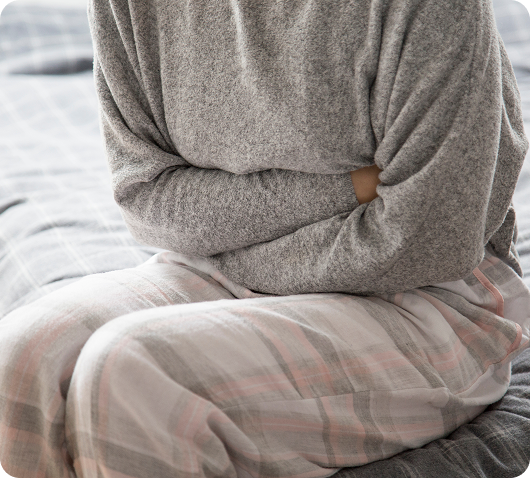Urge Incontinence (OAB)
Relief from sudden urges and leaks through personalized, effective treatment

Understanding Overactive Bladder
Urge incontinence, or overactive bladder (OAB), is a common condition marked by sudden, frequent urges to urinate – often leading to leakage. Although widespread, it’s not a natural part of aging.
Around 30% of men and 40% of women in the U.S. experience OAB symptoms, yet many delay seeking help due to stigma. Early treatment is key to managing symptoms and improving quality of life.
While lifestyle changes and behavioral strategies can help, persistent cases may benefit from advanced options like Axonics Therapy, which offers long-lasting relief.
Understanding Overactive Bladder
Urge incontinence, or overactive bladder (OAB), is a common condition marked by sudden, frequent urges to urinate – often leading to leakage. Although widespread, it’s not a natural part of aging.
Around 30% of men and 40% of women in the U.S. experience OAB symptoms, yet many delay seeking help due to stigma. Early treatment is key to managing symptoms and improving quality of life.
While lifestyle changes and behavioral strategies can help, persistent cases may benefit from advanced options like Axonics Therapy, which offers long-lasting relief.

Causes of Urge Incontinence or OAB
Bladder overactivity can be triggered by several underlying factors, including:
Dysfunction in the muscles that control bladder contractions
Nerve damage affecting communication between the brain and bladder
Bladder irritation or inflammation
Certain medications (e.g., diuretics, sedatives, some antipsychotics)
Hormonal fluctuations
Excess weight that places pressure on the bladder
Bladder outlet obstruction
OAB may also be associated with health conditions such as:
Neurological disorders (e.g., stroke, multiple sclerosis)
Diabetes
Urinary tract infections (UTIs)
Hormonal changes during menopause
Tumors or bladder stones
Enlarged prostate in men
Risk Factors
Several factors may increase the likelihood of developing urge incontinence:
Age – Changes in nerve and muscle function become more common with aging.
Gender – Pregnancy, childbirth, and menopause can contribute to bladder control issues in women.
Excess fluid intake – Especially before bedtime, this may increase bladder volume and urgency.
Bladder irritants – Caffeine, alcohol, spicy foods, and carbonated beverages can worsen symptoms.
Symptoms of Urge Incontinence or OAB
The main symptom of urge incontinence is a sudden and intense need to urinate, often accompanied by leakage. Other symptoms include:
Urge to urinate at inappropriate or inconvenient times
Urine leakage before reaching the restroom
Increased frequency of urination, including nighttime episodes
Involuntary urine leakage during sleep
Anxiety or stress related to fear of leakage
Disruption of social activities and daily routine
Without treatment, symptoms may worsen over time, affecting both physical and emotional well-being.
Managing Urge Incontinence
Treatment plans are tailored based on symptom severity, underlying causes, and your overall health. Management may include:
Bladder training – Scheduled voiding and gradually increasing time between bathroom visits to retrain your bladder.
Dietary changes – Avoiding bladder irritants like caffeine, alcohol, spicy foods, and artificial sweeteners can reduce symptoms.
Pelvic floor exercises – Kegel exercises help strengthen the muscles that control bladder function.
Medications – Certain prescriptions can relax the bladder muscle and reduce urgency and frequency.
Botox® injections – Administered into the bladder muscle, Botox helps reduce overactivity and improve control.
Axonics Therapy for Urge Incontinence
For patients who do not respond to conservative treatment, Axonics Therapy provides a minimally invasive, long-term solution. This therapy works by sending mild electrical signals to stimulate the sacral nerves, improving communication between the brain and bladder.
The procedure involves implanting a small device in the lower back area, near the sacral nerve roots. At Northwest Continence Center, our surgeons specialize in this type of advanced procedure. We ensure the highest standards of precision, care, and expertise to maximize safety and outcomes.
Why Patients Trust Northwest Continence Center
We take a science-based, compassionate approach that puts your comfort and results first.
Advanced Axonics Therapy
A minimally invasive solution that restores nerve communication for lasting relief.
Personalized, Science-Based Care
Every treatment plan is tailored to your unique needs using proven medical approaches.
Experienced, Specialized Providers
Our experts are trained in continence-focused procedures and neuromodulation techniques.
Judgment-Free Patient Support
We create a respectful, compassionate environment where you feel safe and heard.
We’re More Than Just a Clinic
We understand that incontinence can be emotional and isolating. That’s why we’re committed to making your experience safe, respectful, and empowering. Every visit is designed to make you feel heard and supported.

Let’s find the right solution together.